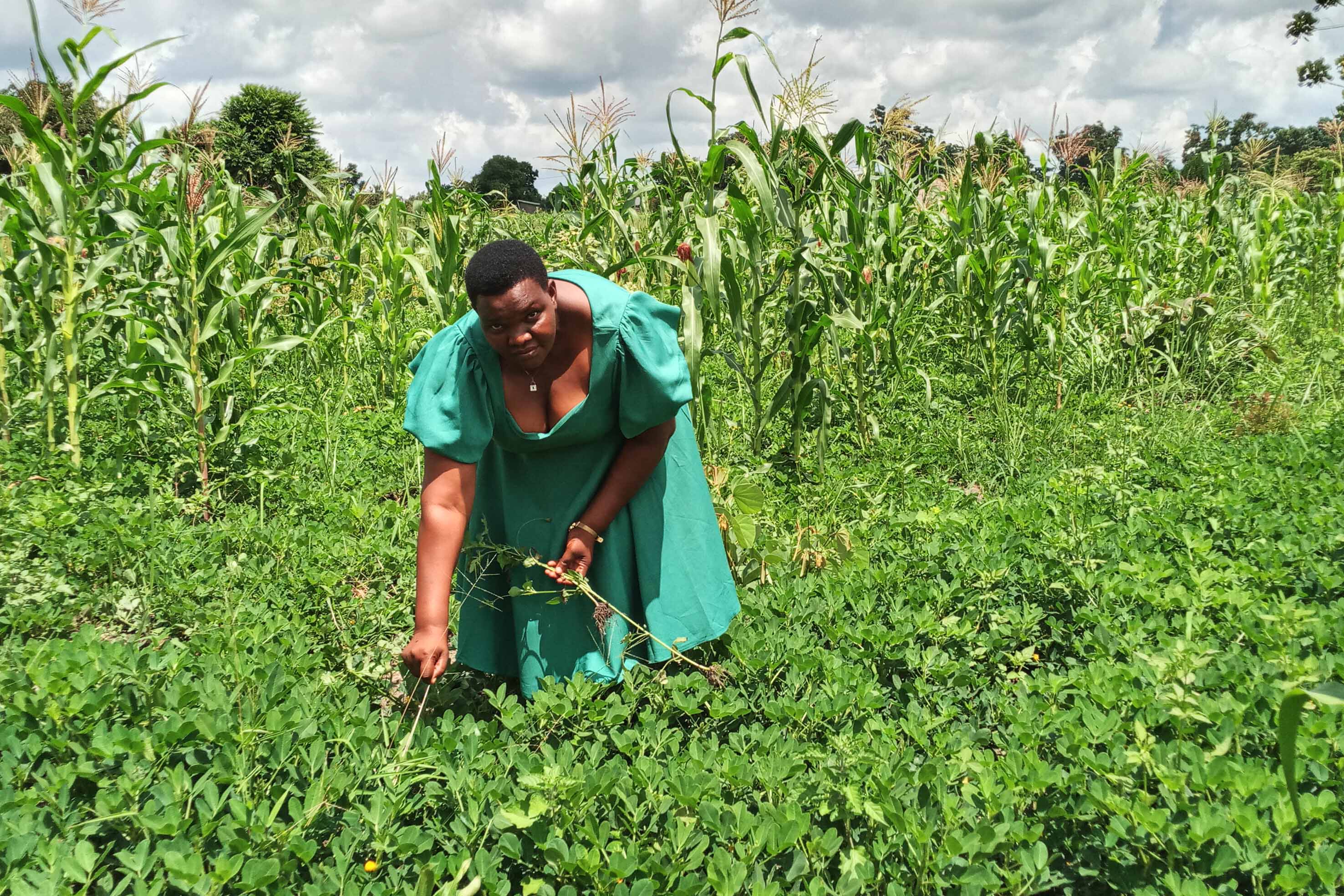Prime
Teso farmers earn more from groundnuts

A farmer in Serere District weeds her groundnut garden. Photo/Lominda Afedraru
What you need to know:
- Roselyn Asio is a groundnut seed breeder in Okulonyo village in Serere District and she is the head teacher of Okulonyo Primary School.
- The farm must be clean of weed, the seed must be planted in rows and at the onset of the rains and post-harvest handling must be observed well.
Groundnut, also known as peanut, is the second most important legume after beans in Uganda. It is also the sixth most important oilseed crop in the world.
In Uganda, it is predominantly cultivated by smallholder farmers on average of 0.5-1 acres of land for food security. However it is slowly becoming a commercial crop.
Production
Although northern and eastern Uganda are traditional growing areas, production has spread to western and central regions as well.
The average yield of groundnuts in Uganda is about 290 kilograms per acre as opposed to the yield potential of 1,200 kilograms per acre. Most farmers are engaged in growing the crop for its grain which is processed for food and for commercialisation.
However this trend is now changing with a few farmers engaged in growing groundnuts for seed which they say fetches more money compared to selling grain.
When Seeds of Gold visited model farms in Teso, the farmers we interacted with explained why they took to groundnut farming and below are the details.
Breeding
Ground breeding is done by scientists at the National Semi Arid Resources Research Institute (NaSARRI) in Eastern Uganda.
The head of the breeding programme at NaSARRI Dr Davis Kalule Okello notes that there are 1,050 groundnut varieties in the country though his team has bred and released improved varieties which farmers are growing both for grain and seed.
Varieties
These varieties include Serenut1R which matures in 100-110 days with yield capacity of 2,500-3,700 per hectare and Serenut2T with same features.
Serenut3R matures between 90-100 days with yield rate of 2,500-2,900 per hectare and Serenut4T with the same features.
Serenut5R matures in110 days with yield rate of 2,500-3,000 per hectare, Serenut6T matures in 90-100 days with same yield rate as the former. Serenute7T with maturity rate 100-110 days yielding 2,500-3,700 per hectare.
Others are Serenut9T, 10R, 11T, 12R, 13T and 14R with same features as the above. These varieties were released between 1998 and 2011 mainly looking at the yield ratio and maturity period.
Most farmers growing groundnut for seed have adopted Serenut14R which they say is high yielding and it preferred by farmers growing the crop in Eastern and Northern Uganda.
Farmer’s voice
Roselyn Asio is a groundnut seed breeder in Okulonyo village in Serere District and she is the head teacher of Okulonyo Primary School.
She has been in the teaching profession since 2005 and since she grew up as orphan having challenges pursuing her education, she decided to venture in groundnut farming in order to upgrade her education level.
It is in 2015 when Dr Kalule and his team of groundnut breeders went sensitising farmers to adopt the improved varieties that is when Asio picked interest in growing the crop.
Previously Asio was growing crops such as maize, sweet potatoes mainly for food but residing close to NaSARRI was an added advantage which led her to engage in commercial farming of groundnuts.
She began by growing the local variety Red beauty where she would harvest 7-10 bags of unshelled groundnuts.
However since she started growing Serenut 14R, her harvest has since increased to between 40 and 50 bags of unshelled groundnuts per season.
She sells a basin of harvested groundnut seed at Shs50,000 or more depending on the available market demand.
Since she is in touch with experts at NaSARRI where most of the farmers go seeking for seed, they are always in touch with her in case of any seed demand.
Benefits
Asio contends that since she began the groundnut seed production, she has never looked behind because she managed to upgrade her level of education by attaining a degree in education from proceeds obtained from groundnut sale.
She is a mother of five children all school going and dealing ground nut seed production contributes to part pf the school fees for her children.
She is now empowered financially and she is not wishing to abandon ground farming for seed production which she says fetches better money than selling grains where a basin goes at Shs15, 000-Shs20, 000.
Yield
The average yield of groundnuts in Uganda is about 290 kilograms per acre as opposed to the yield potential of 1,200 kilograms per acre.
Challenges
Asio notes that it is not easy to grow groundnut for seed unless the farmer is up to date following the required agronomy practices. The farm must be clean of weed, the seed must be planted in rows and at the onset of the rains and post-harvest handling must be observed well.
Due to the rigorous agronomy practices, Asio contends not many farmers are growing ground nuts for seed which is added advantage to her because she has monopolised the seed market.
Advice to fellow farmers
She is advising fellow farmers growing groundnuts not to sell their proceeds immediately after harvesting.
This she says is because most people would have harvested groundnuts which is flooding the market and the price is low. Keeping it for some period of time would fetch a better price.
She is also advising farmers intending to grow groundnuts for seed production to embrace the improved varieties bred by scientists at NaSARRI because they are tolerant to groundnut rosette disease, pests, drought tolerant and are high yielding.
Second farmer
The second farmer engaged in growing groundnuts for seed production is Martine Ocung form the same village.
He has 15 acres of land and he began growing groundnuts in 2003 when he dropped out from school due to lack of school fees. He began by growing the traditional red beauty variety which he says does not yield much.
However in 2004 when NaSARRI scientists began releasing improving verities, he shifted to growing Serenut 14R.
He owns eight acres of land which he purchased from groundnut proceeds. In a season, he is able to harvest 60-70 bags of unshelled groundnuts.
Unlike Asio, Ocung is a multiple farmer growing improved sorghum varieties from NaSARRI for seed processing.




